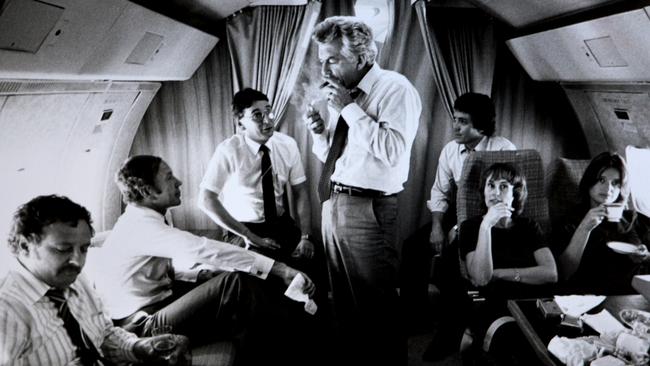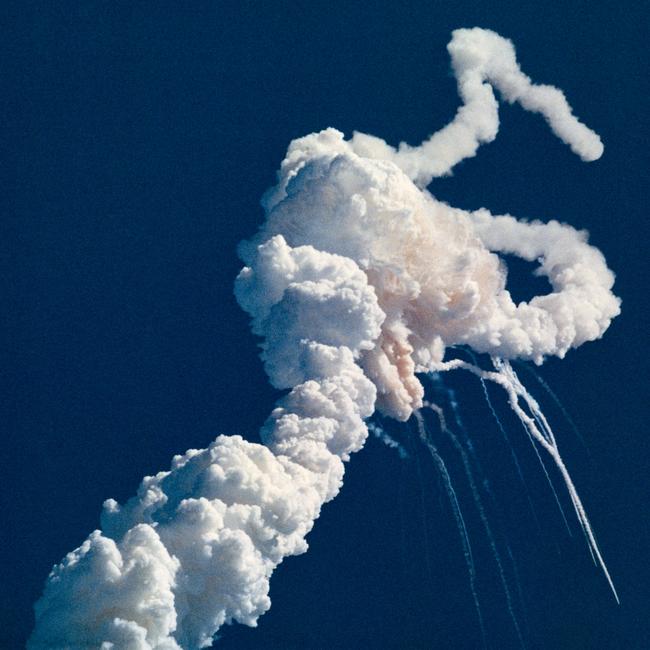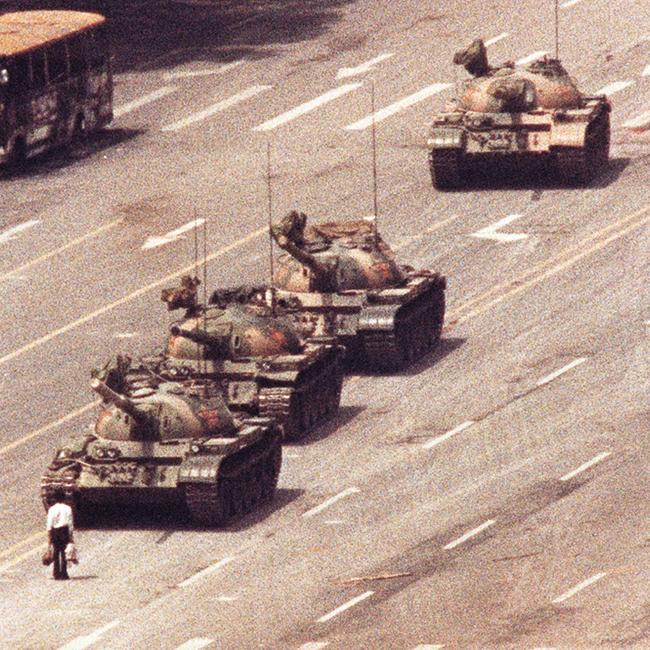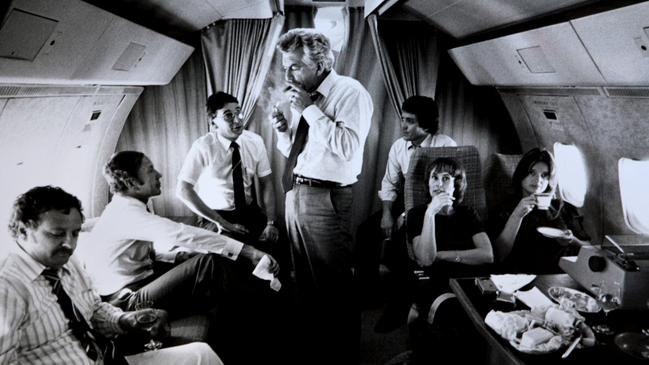You’d never see truth in politics like this today
Photography can be about symbols and in these images we see a quest for freedom, determination, faith and solidarity from a time when publishers came up with extraordinary ways to deliver the world’s pictures to our doorsteps.

The Australian is turning 60 and we invite you to celebrate with us. Our first special series to mark the event is: Six Decades in Six Weeks, counting down to the 60th birthday of the masthead on July 15. Every day for the coming weeks we will bring you a selection of The Australian’s journalism of the past 60 years, from news stories to features, pictures, commentary and cartoons. Today we look through the lens of photography. See the full series here.
Like many staffers at News Limited I started my career within the suburban newspaper network. To make the leap into the big time and take a job in Holt Street (News Limited and The Australian’s headquarters) I had to give up my cameras for a short time and accept a position in the gram-room. This was like one of those old-fashioned telephone exchanges with big machines, flashing lights and thick cables connected to a labyrinth of sockets. Rather than voice connections, this gram technology was for sending and receiving pictures. News publishers came up with extraordinary solutions to bring the world’s news in pictures to our doorsteps. Press photographers on assignment to the regions or abroad hauled a transport trunk stuffed with heavy communications equipment. A photographer’s first task on arrival was not to collapse after a long journey but to black out the windows in the hotel bathroom to construct a darkroom. This period was very much analog. Pictures were scanned; not into digital bits, but line by line by line and transmitted by radio signal. They were received in the gram room, then printed line by line, and in four colour layers – reconstituted into a photograph.
Photography can often be about symbols. The Ash Wednesday picture on this page is a dramatic portrayal of faith enduring life’s challenges. There can be no stronger depiction of the quest for freedom than an anonymous Beijing resident standing in the path of three mighty war machines. There is meaning, too, in the image of a man trying to tear down the Berlin Wall by hand. First you see sheer human determination but using a sledgehammer to destroy the symbolic hammer of communism is another way to depict the desire for solidarity between East and West.
A special mention for the best election campaign photograph by Ray Strange. Ray was a dedicated photographer working for The Australian in its earlier years shooting politics in our critically important Canberra bureau. His fly-on-the-cabin-wall view of Bob Hawke, political reporters and ministry staffers is exceptional. You would never see this sort of truth and reality in today’s manicured campaigns.
March 1983
Dianamania takes off when Prince Charles and his wife tour Australia with baby William. Picture: Getty

January 1986
The Challenger space shuttle and her crew of seven were lost when a ruptured O-ring in a solid rocket booster caused a massive explosion just seconds after launch. Picture: NASA

February 1983
Mt Macedon after the deadly Ash Wednesday bushfires in which 75 people were killed in Victoria and South Australia, including 17 firefighters. More than 2500 homes were destroyed in one of the nation’s worst fire seasons.

December 1989
Kylie Minogue was just 21 and a recent Neighbours graduate when she stepped out in a new look with her boyfriend, the magnetic INXS frontman Michael Hutchence, 29, causing a stir at the premiere of her film, The Delinquents.

August 1980
Lindy Chamberlain with her husband, Michael, and their children Aidan, 6, and Reagan, 4, after the disappearance of baby Azaria Chamberlain at Ayers Rock. It was later accepted the baby was taken by a dingo.

June 1989
A man confronts tanks during pro-democracy protests in Tiananmen Square. China’s crackdown led to a tearful response by Australian PM Bob Hawke. Picture: Reuters

January 1988
The Australian marked the First Fleet bicentenary with pictures of a day in the life of the nation, including the Jones family — Ron, Lyn and David, 15, Tim, 13, and Ben, 8, at Uluru. Picture: Adrian Brooks

January 1988
A fleet of tall ships assembled in Sydney Harbour on Australia Day for the bicentenary, with an estimated 2 million people watching the spectacle from shore. Picture: Ian Mainsbridge

November 1989
Young West Germans hack away at the Berlin Wall, being blasted by East German water cannons in the days before the official opening of East Germany. Picture: Alexandra Avakian

February 1983
Bob Hawke lights a cigar on a VIP flight during the 1983 election campaign. New Labor leader Hawke goes on to defeat Malcolm Fraser. Picture: Ray Strange

December 1987
Shots ring out as armed police prepare to close in on gunman Frank Vitkovic. The killer left eight dead in the Queen St, Melbourne, post office building before jumping from the 11th floor to his death. Picture: Bill McAuley



To join the conversation, please log in. Don't have an account? Register
Join the conversation, you are commenting as Logout